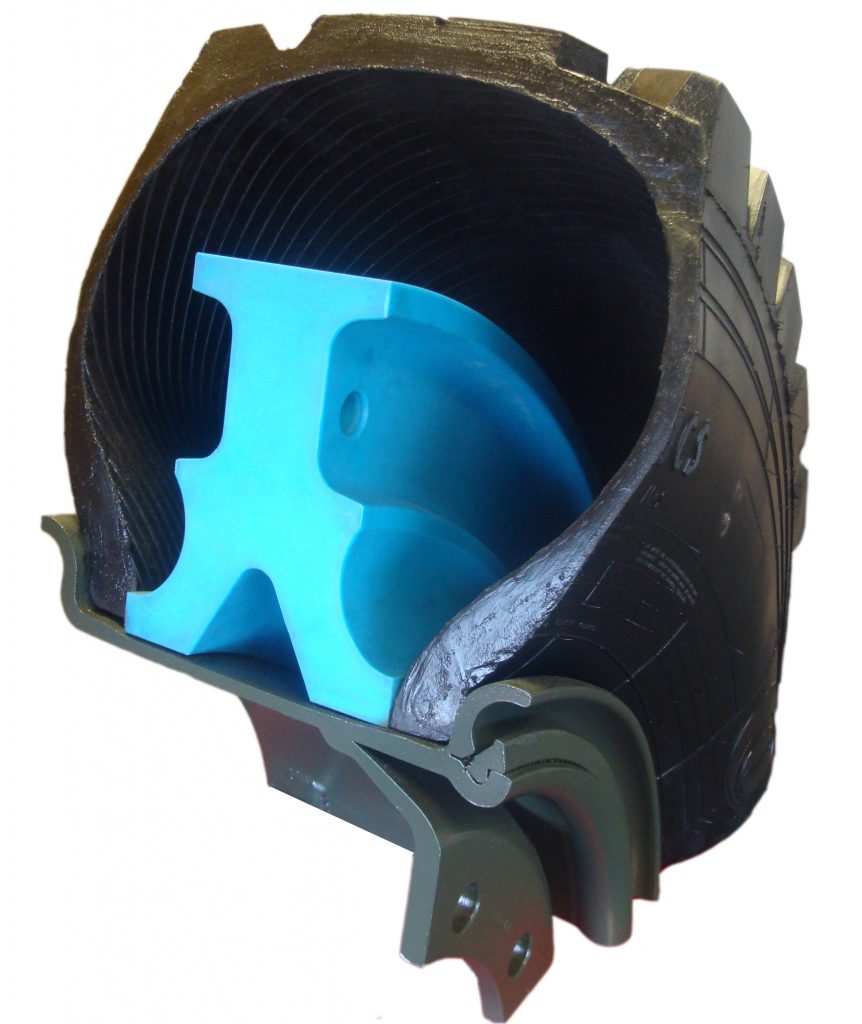- June 19, 2025
- Posted by: feinuojixie
- Category: Run Flat Guide


In the high-stakes world of military operations, where every second and every mile can mean the difference between success and failure, equipment reliability becomes a non-negotiable asset. One component that rarely gets the spotlight—but is absolutely mission-critical—is the run flat tire. Designed specifically to perform under fire, through debris fields, and even after sustaining significant damage, a run flat tire ensures that military vehicles maintain mobility no matter what. While it may not carry weapons or communicate with satellites, its role in ensuring survivability and mission success is undeniable.


The Definition of Military-Grade: What Makes a Run Flat Tire Different
Not all tires are created equal—especially in the military. A run flat tire used in military applications is built with robust structural reinforcements that allow it to function even after complete air loss. Unlike civilian versions, a military-grade run flat tire incorporates composite or rubber inserts, reinforced sidewalls, and high-temperature-resistant compounds. These enhancements enable it to carry heavy armored vehicles across rugged landscapes without the risk of total immobilization. In essence, it transforms the weakest link in a vehicle—its tires—into one of its greatest strengths.
Mission-Critical Reliability: How a Run Flat Tire Keeps Military Vehicles Operational
In combat environments, a disabled vehicle can become a target. That’s why the ability to keep moving—even after tire damage—is vital. A run flat tire provides this edge by supporting the vehicle’s weight for dozens of kilometers after a puncture or blowout. Whether escaping an ambush, pursuing a target, or evacuating the wounded, the uninterrupted movement made possible by a run flat tire can save lives and missions. Its reliability under duress turns it from a mechanical component into a strategic asset.
Combat-Proven Advantages: Real Scenarios Where a Run Flat Tire Saved the Day
Across countless missions, the presence of a run flat tire has made the difference between retreat and rescue. During patrols in conflict zones such as Afghanistan and Iraq, military convoys have been able to escape improvised explosive device (IED) attacks thanks to their run flat tire systems. In many cases, soldiers reported continuing to drive safely for 50 kilometers or more, despite multiple tires being shredded. These are not isolated incidents—they represent a consistent performance standard in modern warfare scenarios.
Built for the Battlefield: Durability and Design in Extreme Conditions
Military terrains are punishing—deserts, mountains, jungles, and urban warzones all present unique mobility challenges. A run flat tire is engineered to withstand these extremes. It resists sharp objects, explosive fragments, and heat buildup from long-distance movement under heavy load. Its internal support system prevents rim contact, preserving wheel integrity and maintaining control over steering and braking. These design features are not just technical advantages—they’re the reason why critical missions do not end in failure due to a blown tire.
Maintenance and Cost-Efficiency: Why the Military Chooses Run Flat Tire Technology
While the upfront cost of a run flat tire may be higher than a traditional model, the military sees substantial returns on that investment. The reduced need for emergency repairs in the field lowers maintenance burdens. Additionally, fewer breakdowns mean fewer mission delays, fewer rescue operations, and ultimately, lower operational risk. The durability of a run flat tire also means longer service life, contributing to lower replacement frequency and cost-effective logistics over time.
The Future of Military Mobility: Innovations in Run Flat Tire Engineering
As warfare evolves, so does the technology that supports it. Future iterations of the run flat tire will likely include integrated sensors to monitor pressure, temperature, and structural integrity in real time. New materials, such as graphene-enhanced rubber and next-generation polymers, are already under research. Modular inserts and adaptable tread designs may enable single tire types to serve multiple mission profiles. These innovations will only strengthen the position of the run flat tire as a cornerstone of military vehicle design.


Mobility Is Survivability – Why No Military Vehicle Rolls Without a Run Flat Tire
In military strategy, mobility equals power. The ability to move swiftly, safely, and continuously is essential for offense, defense, and survival. A run flat tire plays an irreplaceable role in guaranteeing that mobility. From absorbing battlefield shocks to delivering troops out of danger, its impact goes far beyond the rubber. For today’s armed forces, a run flat tire isn’t just a feature—it’s a necessity, a force multiplier, and a silent hero rolling beneath every mission-critical vehicle.
